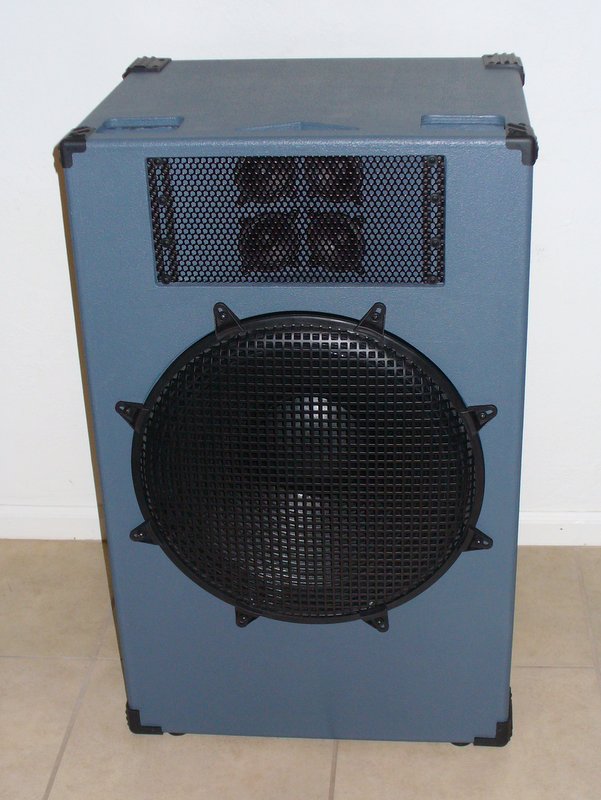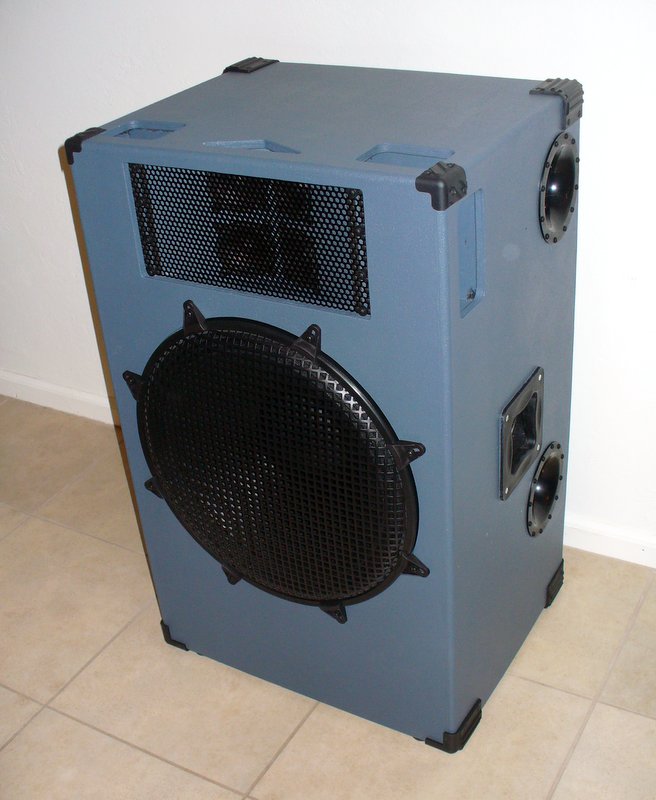The second big experimental bass cab is in response to luthier Skip Fantry's "Quake" bass, manufactured and sold under his KnuckleHead brand. Skip routinely ventures where many fear to tread, and has gone public with basses tuned as low as G#00... which has a fundamental of about 13 Hz.
I think this type of instrument would be called a "sub-contra bass". It is not meant to be used as, or in place of, a normally-tuned bass guitar. It is a different class of instrument, and from what I understand its role is more atmospheric than rhythmic. When brought into the mix, it changes the whole feel of the room... assuming it is played through a cab that can do its part.
Fortunately, for electric bass, we don't have to reproduce the fundamental at anything approaching full power. In fact, we can leave it out altogether, and the ear/brain system can fill in the missing fundamental from the overtone structure. Given how expensive it is to reproduce infrasonic tones at high power, our target is the first overtone. In the case of G#00, that first overtone is at 26 Hz.
The cab you see here is roughly -8 dB at 26 Hz:

Now -8 dB is not very impressive, but this cab is designed to take EQ. And lots of it. The woofer is rated at 1500 watts AES and 3000 watts "music program", and in this application, I think we can look to that 3 kilowatt figure as an indication of what its thermal power handling is.
To keep the thermal power handling up as high as we can reasonably get it, the cabinet is designed with ports both above and below the woofer's magnet, to facilitate chimney-effect cooling. There are four ports, two in each side, staggered because they reach almost all the way across to the far side. This geometry also has the beneficial side-effect of maintaining a symmetrical airload on the back of the cone, and was inspired by Eminence engineer Jerry McNutt:

Thermal power handling is only part of the story; mechanical power handling is almost always the limiting factor. And that's a good thing! We
want our bass cabs to fartout and warn us that they are in trouble before the voice coil gets too hot and the magic smoke escapes!
The woofer used in this cab is a high-end prosound subwoofer, with a claimed linear excursion (based on voice coil overhang according to the manufacturer, which is a rather conservative yardstick) of twenty-two millimeters. That's a lot for a bass cab. The bad news is, we do have to be careful because the voice coil can overheat and the magic smoke escape before we get fartout.
With suitable EQ (which includes a protective high-pass filter to prevent over-excursion from the low fundamental, which is well below the tuning frequency), and a three kilowatt amp, this cab can theoretically deliver flat to 26 Hz at 122 dB, and would be 3 dB down at 20 Hz. That's not bad for a seventy-pound bass cab.
Above the region covered by the woofer, we have four little 3" cone mids in a cross-firing array. The mids are in an open-format Hathor-style chamber, which gives a less boxy sound, improves the ability to hear the overtones from normally shadowed locations like right next to or virtually on top of the cab, and cooling is improved relative to shoehorning the little mids into a small sealed sub-enclosure.
On the back of the cab are two switches. The top switch up = mids at their loudest; top switch down = mids matching up better with the woofer; and bottom switch down = mids off altogether.
Once again, if this cab becomes part of my line-up, it will be a special-order item and will not come cheap. The woofer is a special-order-only unit from Europe that has a three-month lead time.